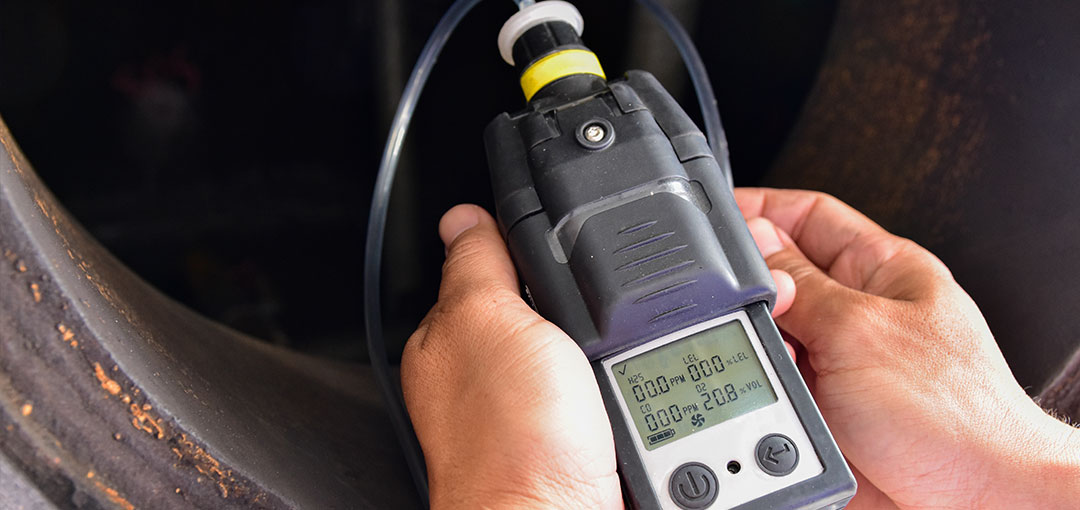7 Dangerous Gases In Confined Spaces & Their Health Effects
7 Dangerous Gases In Confined Spaces & Their Health Effects
April 5, 2023 |
Some gases found in confined spaces have the potential to make you sick or even kill you. You will find these gases in sewers, mines, and submarines. The list below contains some of the most common dangerous gases in confined spaces, how they can affect your health, and how to avoid them.
Carbon Monoxide
Carbon monoxide is an odorless, colorless gas that can be deadly if inhaled in high concentrations. The incomplete combustion of carbon-based fuels like wood and coal produces it. Low levels of carbon monoxide exposure can cause headaches, nausea, and fatigue; high levels may result in brain damage or death.
Generally speaking, there’s no reason to worry about carbon monoxide poisoning when you’re in your home or office because these spaces are well-ventilated. Even if you are working with some sort of combustion engine inside those environments (e.g., a car or motorcycle), it would be impossible for them to produce enough CO to cause harm unless they were running continuously for several hours straight without any fresh air entering through open windows or doorways.
Ammonia
Ammonia is a colorless gas with a strong odor. It’s often used in cleaning products and can be found in fertilizers, solvents, and household cleaners. Ammonia inhalation irritates the upper respiratory tract and lungs; symptoms include coughing, shortness of breath, wheezing (a whistling sound), chest pain or tightness, and rapid breathing rate.
Hydrogen Sulfide
Hydrogen sulfide is a colorless, flammable gas with a strong odor of rotten eggs. It can be produced by the decay of organic matter in confined spaces and released by fires involving oil or fat.
Hydrogen sulfide is toxic to humans if inhaled in high concentrations, which may cause nausea and vomiting within minutes or hours after exposure. Exposure to lower levels over more extended periods can lead to eye irritation and damage, as well as respiratory distress such as shortness of breath and difficulty breathing (dyspnea).
In addition to being dangerous on its own, hydrogen sulfide reacts readily with other chemicals present in confined spaces, such as oxygen or carbon monoxide (CO), forming corrosive compounds called “sulfur trioxides” that are even more harmful than hydrogen sulfide itself.
Carbonyl Sulfide
Carbonyl sulfide is a colorless gas with a strong odor. It has a boiling point of -20 degrees Celsius and is insoluble in water but soluble in alcohol, ether, and chloroform. Carbonyl sulfide can be produced during the combustion of organic materials such as coal, paper, or rubber.
Carbonyl sulfide exposure can cause headaches, dizziness, weakness, and nausea if exposed to high levels for short periods (1-2 hours). Inhalation of lower levels for more extended periods can lead to irritation of nose/throat mucous membranes, which may result in coughing or chest pain when breathing deeply; bronchitis-like symptoms such as wheezing coughs; difficulty breathing due to spasms in airways caused by irritation from mucous membranes; pulmonary edema (fluid buildup) if exposure levels are high.
Hydrogen Chloride
Hydrogen chloride is a toxic gas that can cause severe injury or death if inhaled. It is colorless and smells like bleach or sour milk, but not everyone can smell it. Hydrogen chloride forms when chlorine comes in contact with water, so it’s commonly found in household cleaners and swimming pools.
It can cause damage to your lungs if you breathe it in, leading to respiratory problems like asthma attacks and difficulty breathing. In addition, exposure may cause skin irritation or burns.
Sulfur Dioxide
Sulfur dioxide (SO2) is a gas that can be released by burning fossil fuels, such as coal and oil. It’s also found in volcanic eruptions and as a byproduct of industrial processes. Sulfur dioxide irritates the nose and throat, causing coughing, wheezing, and shortness of breath. It may also cause asthma attacks in people who already have the condition.
Exposure to high levels of sulfur dioxide over time (for example, if you work around large amounts of coal) could increase your risk for respiratory problems like emphysema or bronchitis.
Nitrogen Dioxide
Nitrogen dioxide is a colorless or pale-yellow gas with a pungent, irritating odor. The combustion of fossil fuels, diesel engines, and other sources of air pollution forms it.
Nitrogen dioxide has been linked to respiratory problems such as asthma attacks in people with asthma and chronic bronchitis in smokers. The gas can also worsen heart disease by causing inflammation that leads to heart attacks or strokes. The EPA says long-term exposure to high levels of nitrogen dioxide can damage lung tissue and reduce its ability to fight infection.
Conclusion
The best way to protect yourself from dangerous gases in confined spaces is by knowing what they are and how they affect your body. It’s also important to know the signs of exposure so that you can get out quickly if anything goes wrong.
